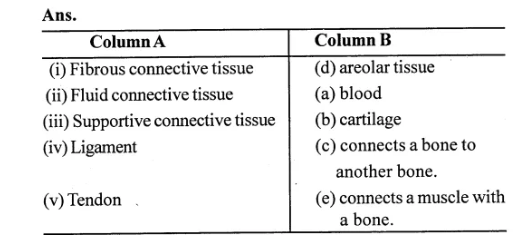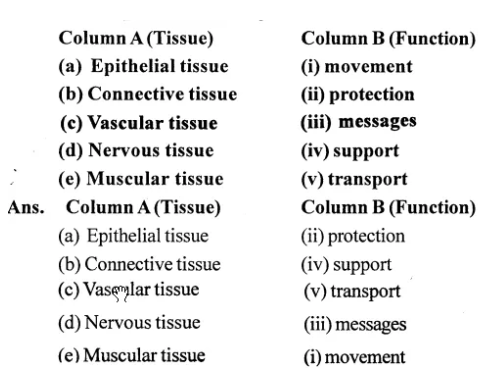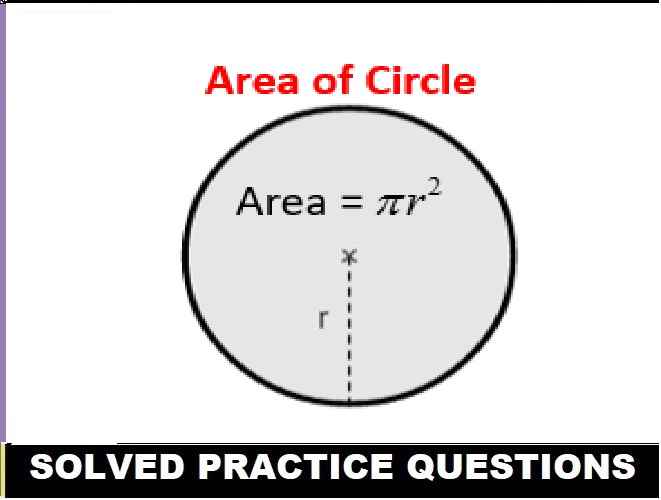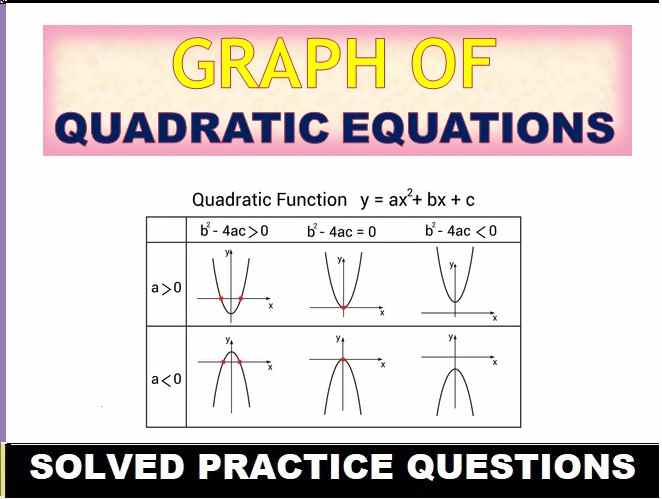Plant And Animal Tissues ICSE Class-7th Concise Selina Biology Solutions Chapter-1 . We Provide Step by Step Answer of Objective, True False , Fill in the blanks , Match the following , Short/Long Answer Type of Exercise-1 Plant And Animal Tissues . Visit official Website CISCE for detail information about ICSE Board Class-7.
Plant And Animal Tissues ICSE Class-7th Concise Selina Biology Solutions Chapter-1
Review Questions
MULTIPLE CHOICE QUESTIONS
1. Put a tick (✓) against the most appropriate alternative in the following statements.
(i) A group of similar cells to perform a specific function forms a
(a) organ
(b) species
(c) organ system
(d) tissue
Answer
organ system
(ii) The fine branches given out from the cell body of a nerve cell are
(a) dendrites
(b) cyton
(c) axon
(d) neurons
Answer
axon
(iii) Fluid connective tissue of humans is
(a) blood and cartilage
(b) lymph and plasma
(c) blood and lymph
(d) stroma and matrix
Answer
blood and lymph
Short Answer Questions (Plant And Animal Tissues ICSE Class-7th)
Question 1.
1. Define the following terms:
- Tissue
- Organ
Answer:
- Tissue: A group of similar cells which perform a specific function.
example: Muscular tissue in animals. - Organ: The different type of tissues which group together to function in a co-ordinated manner.
example: liver
2. Answer the following : (Plant And Animal Tissues ICSE Class-7th)
Question 2(i).
What is a meristematic tissue ? How is it different from permanent tissues ?
Answer:
Plant tissues are classified into two types:
- Meristematic tissue
- Permanent or non-diving tissue
Meristematic tissues are the plant tissues which are made up of actively dividing cells. These tissues actively divide and lead to the growth of the plant body. They are found at the growth points of the plant like tips of root, stem and branches etc.
- Cells are small with thin cell walls.
- Cells have large and conspicuous nuclei.
- Cells have no vacuoles.
- Cells are actively dividing type cells.
Difference between Meristematic and permanent
Meristematic tissue :
- Meristematic tissue is present at the tip of the root and stem and in between the xylem and phloem. Form apical meristematic tissue when present at the tips. It is in the form of cambium in between the xylem and phloem.
- Meristematic cells divide and form other types of tissues. The cells are thin walled.
- Meristematic cells may be intercalary as in case of monocots.
- The cells are small and isodiametric, vacuoles are small or absent.
- Respiratory and biosynthetic activities maximum.
- The cells are immature and mitochondria simple.
- Proplastids act as plastids.
Permanent tissue
- Permanent tissue may be simple as parenchyma, collenchyma or sclerenchyma and it may be complex as xylem and phloem.
- These are made up of more than one kind of cells. These perform a common function Xylem and phloem form vascular system of the plant. These cells do not have the power to divide.
- These cells may act as epidermis cortex or grit cells. Sclerenchyma gives strength.
- Living cells of permanent tissue have vacuoles. The cells are large and of different shapes.
- Both these activities are low.
- The cells fully mature, mitochondria fully developed.
- Living cells have plastids.
Question 2(ii).
Which living material would you take to demonstrate meristematic tissue ?
Answer:
Green gram seeds can be used to demonstrate meristematic tissue which when soaked in a petridish stuffed with wet cotton and left for 3-4 days would sprout out. These sprouted seeds have roots developing whose root tips have meristematic tissue.
Question 2(iii).
What is the function of meristematic tissue ?
Answer:
The meristematic tissue have the primary role in the growth of the plant tissue as it consists of active dividing cells
Question 3.
State whether the following statements are True or False.
(i) A tissue is formed of only one type of cells.
Ans. True
(ii) Only one type of tissue forms an organ.
Ans. False.
Correct: Two or more types of tissue form an organ.
(iii) Permanent tissue is made up of undifferentiated and dividing Cells.
Ans. False.
Correct: Meristematic tissue is made up of undifferentiated and dividing cells.
(iv) Meristematic tissue is found at growing tips of a plant.
Ans. True
(v) Phloem is formed of dead tubular cells.
Ans. False.
Correct: Phloem is formed of living tubular cells.
Question 4.
Fill in the blanks by selecting suitable words from the list given below:
“Thin – walled, collenchyma, vascular, tissues, conducting”
- A group of different tissues working together to perform a function is called an organ.
- Xylem and phloem form the conducting tissue.
- Conducting tissue is also called vascular tissue.
- Cells are elongated and thick at the comers in collenchyma tissue.
- Parenchyma is composed of large thin-walled cell
Question 5.
Match the items given is column A with those given in column B:
Column A
(i) Fibrous connective tissue
(ii) Fluid connective tissue
(iii) Supportive connective tissue
(iv) Ligament
(v) Tendon
Column B
(a) blood
(b) cartilage
(iii) Supportive connective tissue
another bone.
(d) areolar tissue
(e) connects a muscle
with a bone.

Question 6.
How do you rank the following among cells, tissues, organs, or organism ?
- Amoeba : organism
- Euglena: organism
- Skin : organ
- Lungs : organ
- Neuron : tissue
- Cardiac muscles: Ti1ue
Question 7.
Each of the tissues listed in Column A is related to one of the functions given in Column B. Match the lines correct pairs by drawing

Question 8.
Name the kind of tissue that
- Carries oxygen around your body — Blood tissue.
- Brings about movements in animals — muscular tissue.
- Transports food to different parts of plant— phloem.
- Transports water in plants — xylem.
- Supports an animal’s body — connective tissue (supportive)
- Binds different tissues together — Fibrous connective tissue.
- Conducts messages from one part of the body to another — nervous tissue.
Question 9.
Based on the following information, identify the three types of epithelial tissue in the figures given below :
(i) Cuboidal epithelium : It consists of a single layer of cuboidal cells.
(ii) Columnar epithelium: It is composed of tall, cylindrical cells with oval nuclei usually placed at the base of the cells.
(iii) Ciliated epithelium : It consists of cells being hair-like cilia on their free surface.
Answer:
(i) fig. b (ii) fig. a (iii) fig. c
Question 10.
Write three differences between the two principal vascular tissues found in plants.
Answer:
Xylem
- Transports water and minerals absorbed by the roots to other plant parts.
- Consists mainly of dead cells.
- Conduction is unidirectional i.e. only upwards from the roots.
Phloem
- Conducts food manufactured in the leaves to other plant parts.
- Consists mainly of living cells.
- Bidirectional conduction i.e. both upwards and downwards from the leaves.
— : end of Plant And Animal Tissues Solutions :–
Return to – ICSE Class-7 Selina Concise Biology Solutions
Thanks



helpful